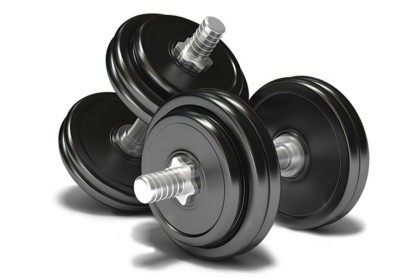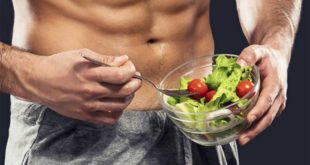
Whenever associate professor Belinda Beck hears of another school that’s banned kids from doing cartwheels or playing on the monkey bars, she despairs. Why? Because for every child who suffers an injury from such activities, 10,000 more will benefit in terms of reducing their future risk of osteoporosis just by doing weight-bearing and osteogenic exercises (specific to bone development – such as twisting, turning and jumping) at an age when it really matters, she says.
Beck, who’s a professor at the Centre for Musculoskeletal Research at the Griffith Health Institute in Queensland, says most of our lifelong bone mass is built before the age of 20. “You can increase your bone bank to such an extent during that period that when you start losing bone – as everyone does – your bone mass never falls below the fracture threshold,” she explains. This means you’re less likely to develop osteoporosis, the disease in which bones weaken and are more prone to fracture.
While this is good advice for our kids, what does it mean for the current osteoporosis epidemic in adults? Every five to six minutes, someone is admitted to an Australian hospital with an osteoporotic fracture, and this is set to rise to every three to four minutes by 2021.
The potential benefits
So can bone density be increased later in life? “That’s the million-dollar question that we need more research on,” Beck says. For this reason, she and her team have recruited 100 post-menopausal women with low bone mass for an exercise study, with the aim of finding out if it’s possible to increase bone density through serious weight training.
In the past, heavy weight training has been discouraged for those with osteoporosis because lifting heavy weights incorrectly can crush the vertebrae (and anyone with low bone density shouldn’t embark on a weightlifting program unless it’s properly supervised and they’ve spoken to their GP or specialist). However, Beck became interested in the idea of using such training as a treatment after hearing of a Queensland woman with osteoporosis whose bone density had improved through lifting weights.
Seven years ago, Gold Coast Olympic weightlifter Lisa Weis was approached by the woman, who’d read that lifting weights might improve her condition. Weis, who has a degree in human movement, agreed to teach her the correct technique, and showed her how to keep her back straight and core engaged, and use compound movements such as squats, deadlifts, push-ups and chin-ups.
After subsequent scans revealed that the woman’s bone density had improved, Weis chose to become a specialist in helping osteoporotic women improve their condition. “I now have women in their 60s who can effortlessly deadlift 60kg or 70kg and do chin-ups,” Weis says. “And a 74-year-old who can deadlift her bodyweight.”
That’s a good outcome in itself, she says, as it improves mobility and therefore the chances of independent living in older age. However, equally impressive have been her clients’ scans which, she says, have shown a halt in bone decline and even increases in bone density – one woman saw an increase of 5.8 per cent – without medication.
Protecting your bones
Given the unpleasant side-effects of the current medication used to treat osteoporosis, Beck says that finding a non-pharmacological treatment would benefit thousands of Australians. When Weis first approached Beck with her findings, the researcher admits she wasn’t sure what to make of the results, but she says now that Weis is “using very correct technique so it’s possible that she’s using a strategy that’s safe and effective”.
The Griffith study will see one group of women do a supervised resistance training program, while the other will do a home-based controlled exercise program, twice a week for eight months. Calcium intake will be monitored, and the participants will then be tested for improvement in bone strength, body composition and physical function.
In the meantime, Beck says we should all be actively working to reduce our osteoporosis risk. Weight-bearing exercises such as brisk walking, jogging, skipping and dancing, and resistance training such as lifting hand weights or ankle weights, have been found to improve bone density. Her earlier research has also shown that regular stomping can help to maintain bone density, and she says a way to incorporate this into daily life is to stomp every morning while you clean your teeth.
Other proven ways to reduce your risk include eating a healthy diet with three to five serves of calcium-rich food (at least 1000mg) a day – such as dairy products, legumes and oily fish – and getting enough vitamin Dfrom safe sun exposure.
Maximise your bone workout
By Rob Daly, a Professor of Exercise and Ageing at Deakin University
Add these steps into your regular workout to improve its impact on your bones:
- Stand for as many exercises as possible to load the bones andimprove balance.
- Work vulnerable areas such as the hips, thighs and forearms, and don’t neglect the hip abductors (hip joint muscles – do lateral leg raises) and hip adductors (muscles on the inner thighs – try medicine ball squats).
- Include high velocity training – lifting a weight rapidly but lowering it slowly. Change your program every three to four weeks to stress the bones, and aim for two to three weight training sessions a week.
If you have osteoporosis
“It’s important to consult your doctor or physiotherapist about any exercise regimen,” Daly says. “Don’t attempt heavy lifting, jumping, twisting or jarring without medical advice.”
Source: bodyandSoul
 We are sharing information for knowledge. Presented by. SocialDiary.Net
We are sharing information for knowledge. Presented by. SocialDiary.Net



